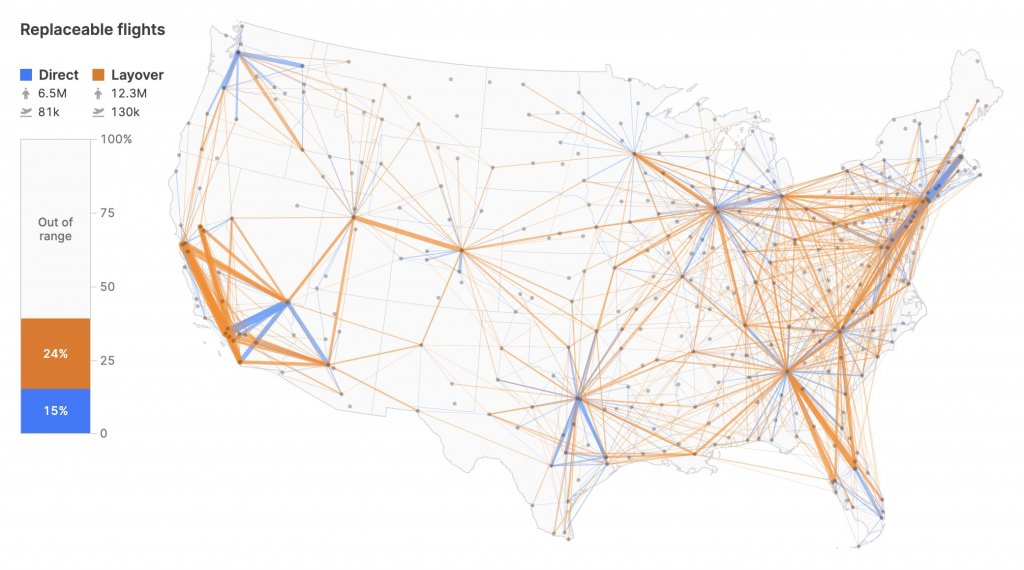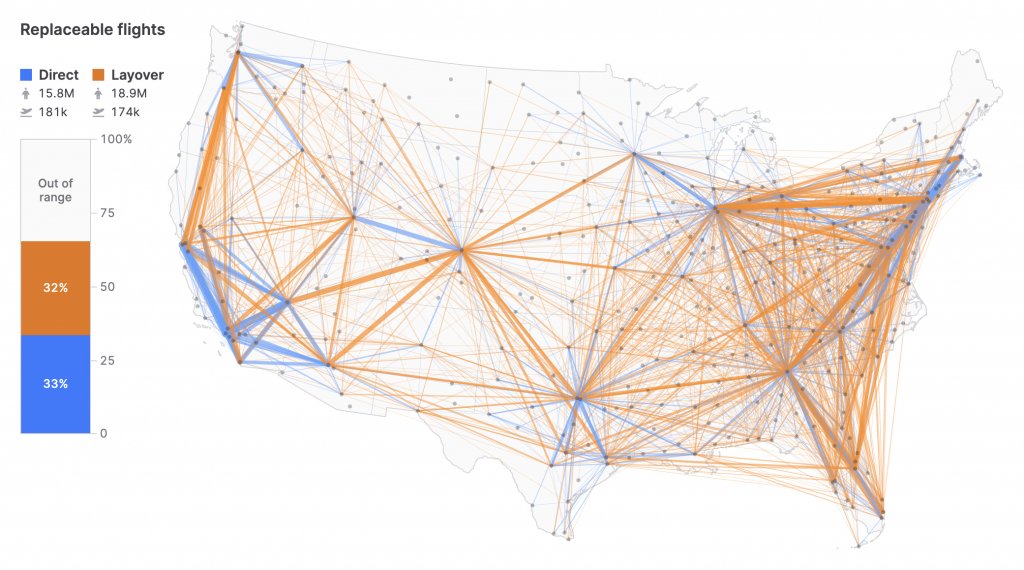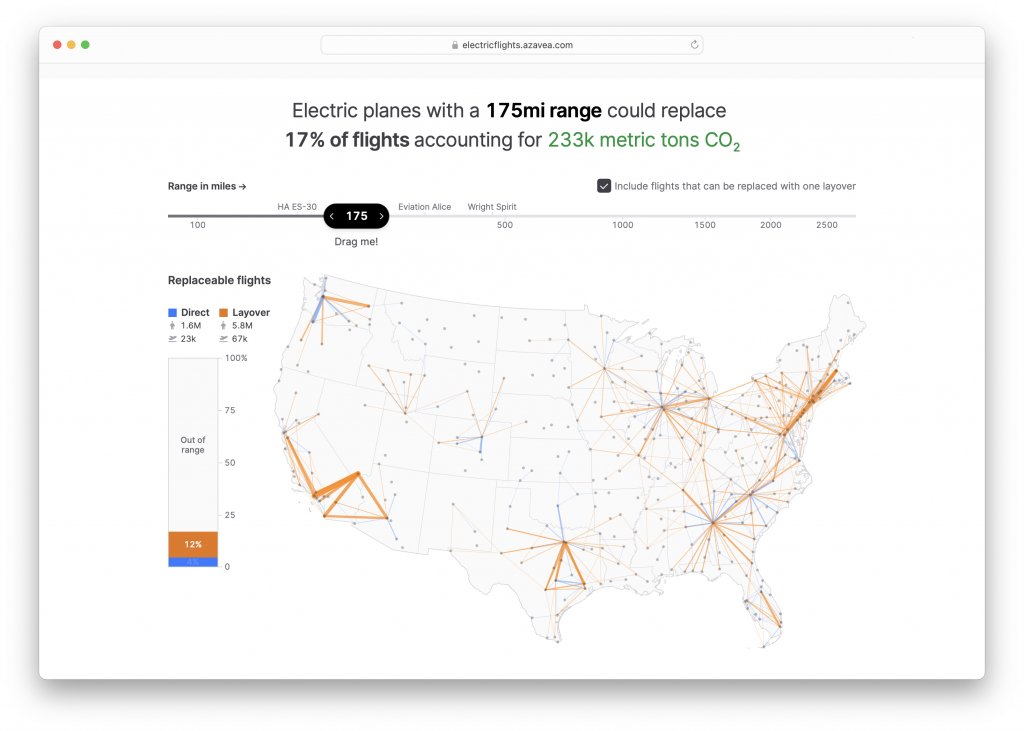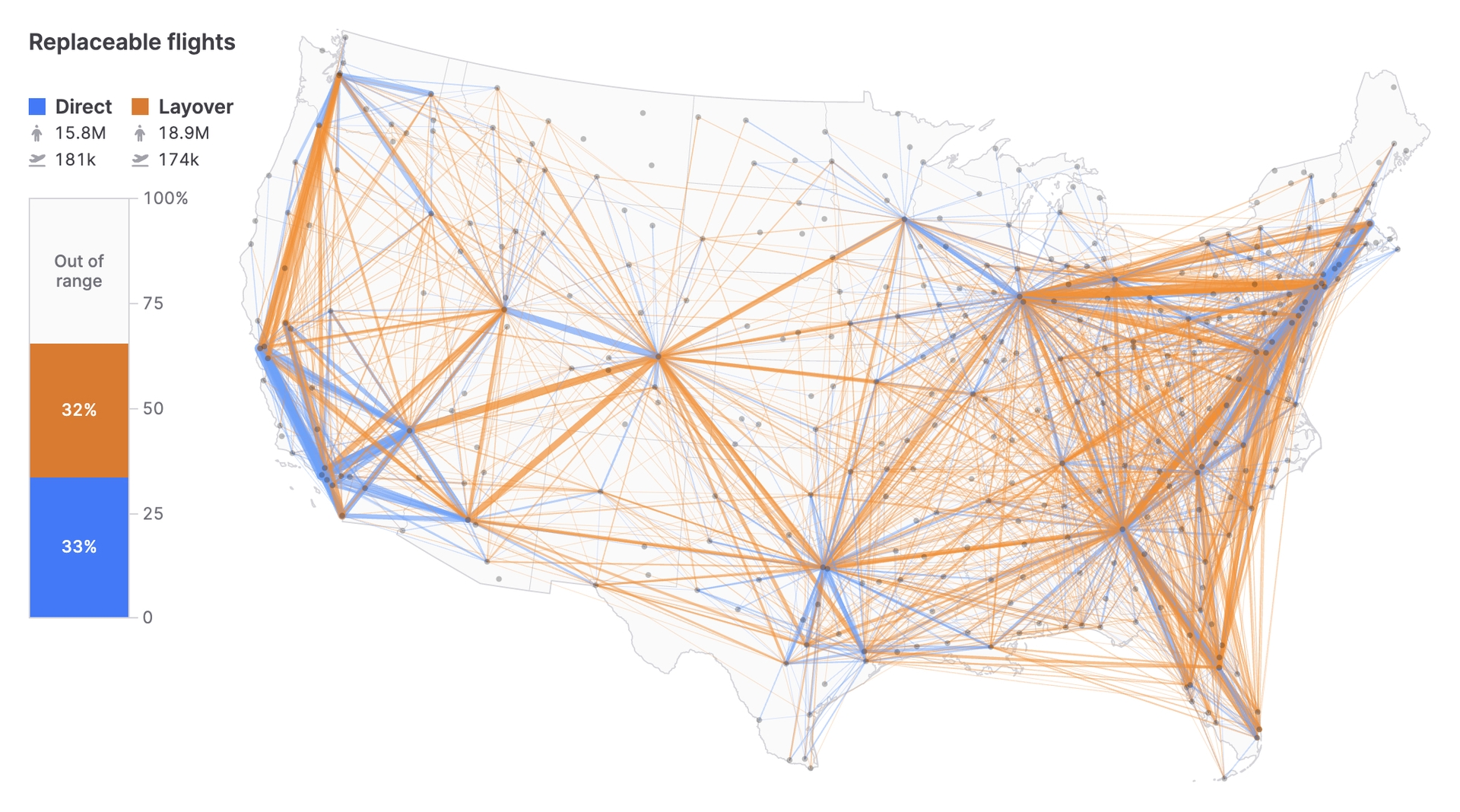Why the focus on electrifying domestic air travel?
Aviation accounts for around 3.5% of global climate change (Source) and the aviation industry does not have a plan to get to zero emissions fast enough. It’s now commonplace for flight comparison websites to display per-seat carbon emissions to flyers deciding between flights. Although this information seems valuable, it’s important to consider: does it actually benefit flyers or the environment? If so, to what extent? In reality, the emissions numbers provided by flight comparison websites primarily serve to:
- Result in generally insignificant carbon emissions savings.
- Make you feel better about your choice to fly — even though grounded travel is generally less carbon intensive across the board.
- Push people to choose longer, non-stop flights that are even harder to electrify than shorter flights.
To further explore the potential for future electric air travel, we set out to explore the question: What electric plane range is needed to electrify US domestic air travel?
Our analysis: domestic air travel plausibility
We based our analysis on one month of flight data published by the U.S. Bureau of Transportation Statistics (BTS). Certified U.S. air carriers report monthly air traffic data to BTS, who makes the data available to the public.
In August 2022 the largest US airlines carried out more than 543,000 domestic passenger flights across the contiguous United States, taking 61 million passengers from A to B. By our very rough estimate (we approximated emissions at 144.2g CO2 per-seat-per-mile), they emitted approximately 7.8 million metric tons CO2 in the process.
To reduce the complexity of this project we set aside questions about supply chains, the electric grid, aircraft capacity, or air traffic. We compared the reported range of several electric aircraft to BTS flight segment data to answer the simple question: How many flights can be migrated to an electric plane directly, or with one additional layover?
Electric aircraft currently in development
A number of companies are developing electric planes that could, in theory, bring flight emissions to near zero if the electric grid were fully decarbonized. There are three main startups that are looking to enter passenger travel competing with planes at airports today.
| Eviation Alice | Wright Electric Spirit | Heart Aerospace ES-30 | |
| Estimated range (in miles) Numbers not guaranteed and subject to change | 288 | 460 | 124 |
| Passengers | 9 | 100 | 30 |
| Plan to come to market | 2027 | 2026 | 2028 |
| Current status | Maiden flight taken | Some components tested | Not public |
| Airline backers (for preorders | DHL Air New Zealand Evia Aro (in germany) Cape Air | Viva Aerobus easyJet | Mesa Air Group United Airlines Air Canada |
Domestic flight electrification plausibility based on aircraft in development
Eviation, one of the startups working on creating thrust without burning fossil fuel, is currently working on developing Alice: their first small-scale electric aircraft. Alice is planned to come to market in 2027 with a range of about 290 miles and the ability to carry 9 passengers. In theory, Alice could complete 81,000 of the domestic passenger flights in August 2022. That’s 15% of all flights within the contiguous United States. If we allow one additional layover, Alice could already cover 39% of all flights!

Unfortunately, Alice is a small aircraft and not suited to electrify commercial air travel at scale. Wright Electric is working on a more interesting option. The company specializes in retrofitting larger British Aerospace 146 airliners with electric engines. Their Spirit has an estimated range of 460 miles.
With its 460 mi range, Spirit could replace 181,000 flights (15.8M passengers). That is 33% of all flights that month, or approximately 698,000 metric tons of CO2. With one additional layover Spirit could even replace 65% of all flights, or 2.5 million metric tons CO2.

The 355,000 flights in this range average 97 passengers per flight, suggesting that the Spirit with its 100 seats could replace a lot of jet fuel-powered planes one-to-one!
Electrifying 100% of US domestic flights
Even though it would be naive to hope that we’ll see long-range, zero-emission electric planes in due time, we didn’t stop at 460 miles. Our interactive visualization lets you explore any range between 100 to 2,500 miles. You can also select an individual airport from the map to see only flights from that location. The titles, charts and numbers dynamically change in relation to the range slider and the selected airport. Head over to electricflights.azavea.com and explore what range it would take to electrify 100% of US domestic flights!

As of February 2023, Azavea was acquired by Element 84. This project was completed prior to that transition.
Authors: Bryan Quigley, Philipp Schmitt, Gates Godin
